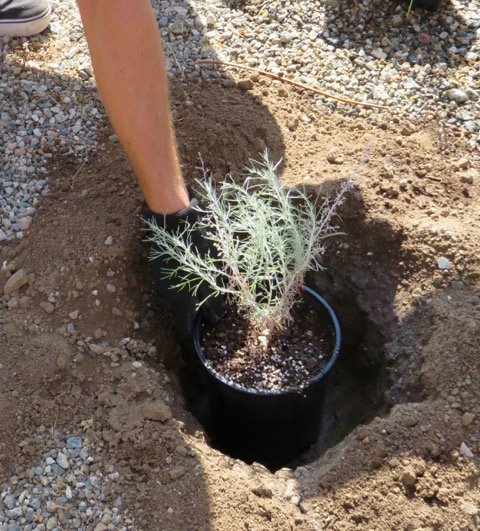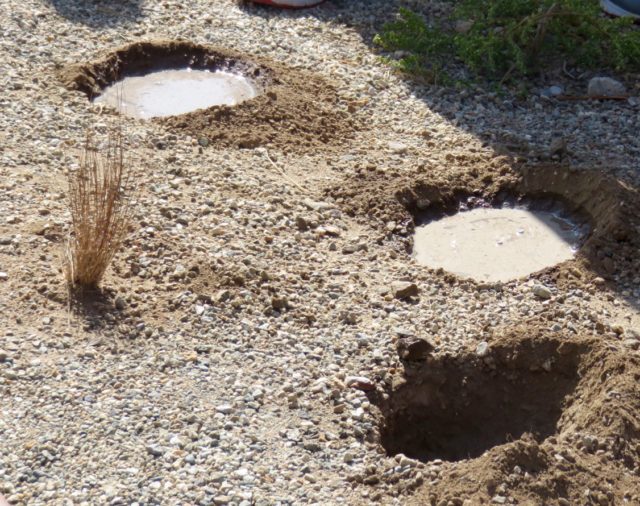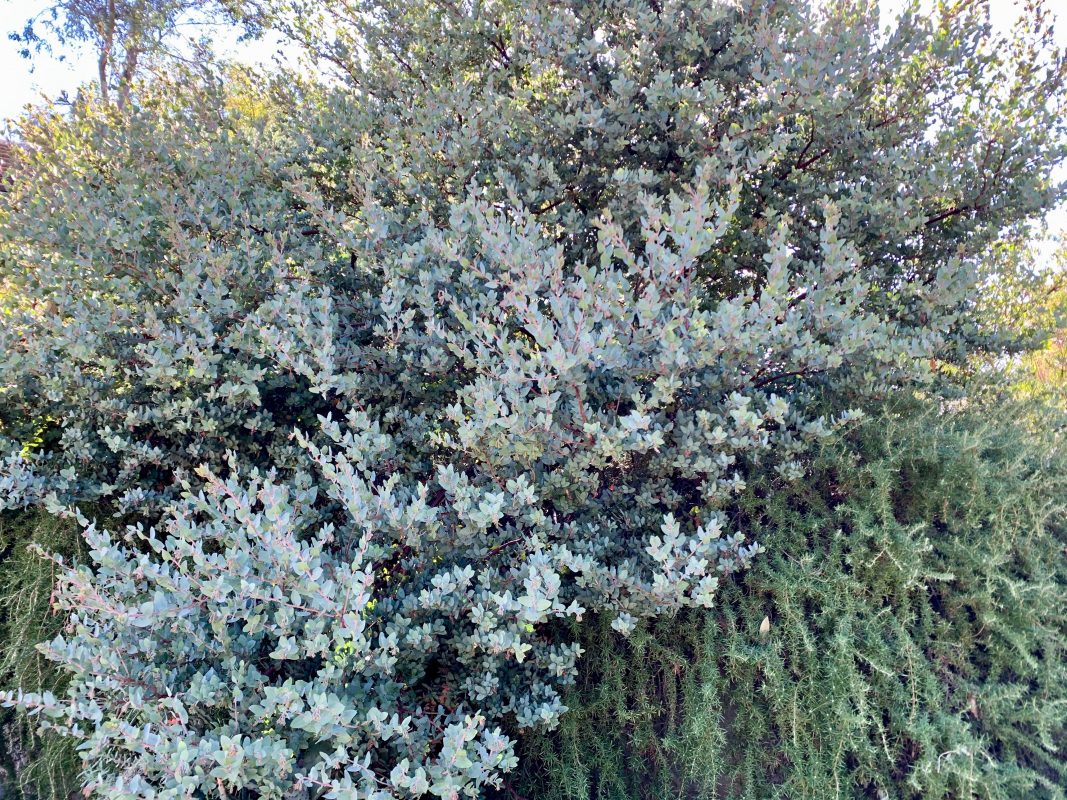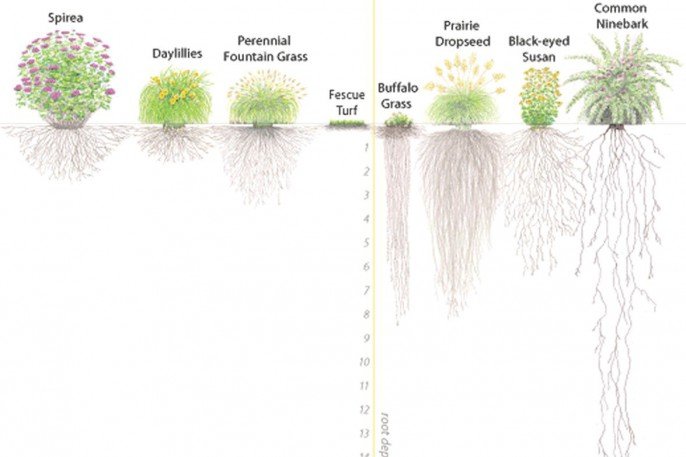We love them, we fear them, and some of us obsessively hover over them as we wonder if we’re caring for them properly. Meanwhile, out in the wild native plants – in our case, California native plants – manage to establish themselves without any human intervention. What gives? What can we do to assure their survival?
Our local chapter of the California Native Plant Society provided this handout on planting and watering during our recent plant sale. I helped develop it, first taking info from the CNPS website, and then native plant experts in our Riverside-San Bernardino area fine-tuned them.
Some takeaways from the handout above:
Planting
- Dig a hole twice as wide as the plant and as deep. Then rough up the sides and bottom of the hole (so the roots will have an easier time). Some recommend digging deeper but add dirt since plants tend to settle and this can cause rotting of the stem.
- Moisten the hole (this also reminds you how fast your soil drains) and soak the plant.
- Don’t rough up the roots, and plant so the base of the stem is about a half inch above the surrounding soil.
- Press down gently on the filled in dirt to remove air pockets.
We learned the above the hard way, having hired out the planting of some California natives in our first California home in San Diego County. When I pulled out some dead plants a couple months later, they came right up because they hadn’t been watered and tamped in, and some were planted too low.



Watering
- Water heavily right after you plant. You can’t overwater when you first plant, so give it a five gallon bucket of water or even more. One guide even said 20 gallons. You want the roots to burrow down to tap the groundwater. (see diagram of roots at end of the article)
- Keep the rootball moist the first 3 months, the next several months water deeply but less frequently. If you’re getting rainfall, you may not need to supplement much; but if not, this means watering 1-2 times a week the first three months, and every 1 to 3 weeks the second three months — all dependent on your soil type, sun exposure, location, etc.
- Replicate nature. This is a harder with the climate change going on, with less rain and hotter temps, so we need to say ‘replicate nature in a good rainfall year.’ Our area has received a half-inch of rain — and we may be lucky to get 8 inches this season. (In contrast, last rainy season – October to April – logged 16 inches.) So if you planted a month ago like I did, you certainly can’t rely on rain. The idea is to give supplemental water when it would be more likely for natural rain. In hotter months, don’t water in the middle of a hot day. Simulate a light summer storm during cooler, cloudy days.
- Established plants like a spraying of water to dust off the leaves, Consider this every month during a cool stretch.
- Move watering away from the stem as the plant matures, to moisten the expanding roots. This avoids root rot. After losing some manzanitas in our first home, we focused on doing this, always watering around the manzanita as it grew. They’ve done great!


roots of non-native (left side) and native plants (right side)
Final thoughts: With the unique microclimate and soil of our yards, we are artificially putting plants where they might not naturally grow. But your chances improve by following the information above, especially if we do homework to pick plants that historically grow in our area and that should do well with our sun/shade and soil type. See Calscape to help with that!
And we’ve lost some plants. For example, after three tries with the drought-resistant Chuparosa I’ve given up! Some are just happier than others to live in our yard. Happy planting.
Leave a Reply